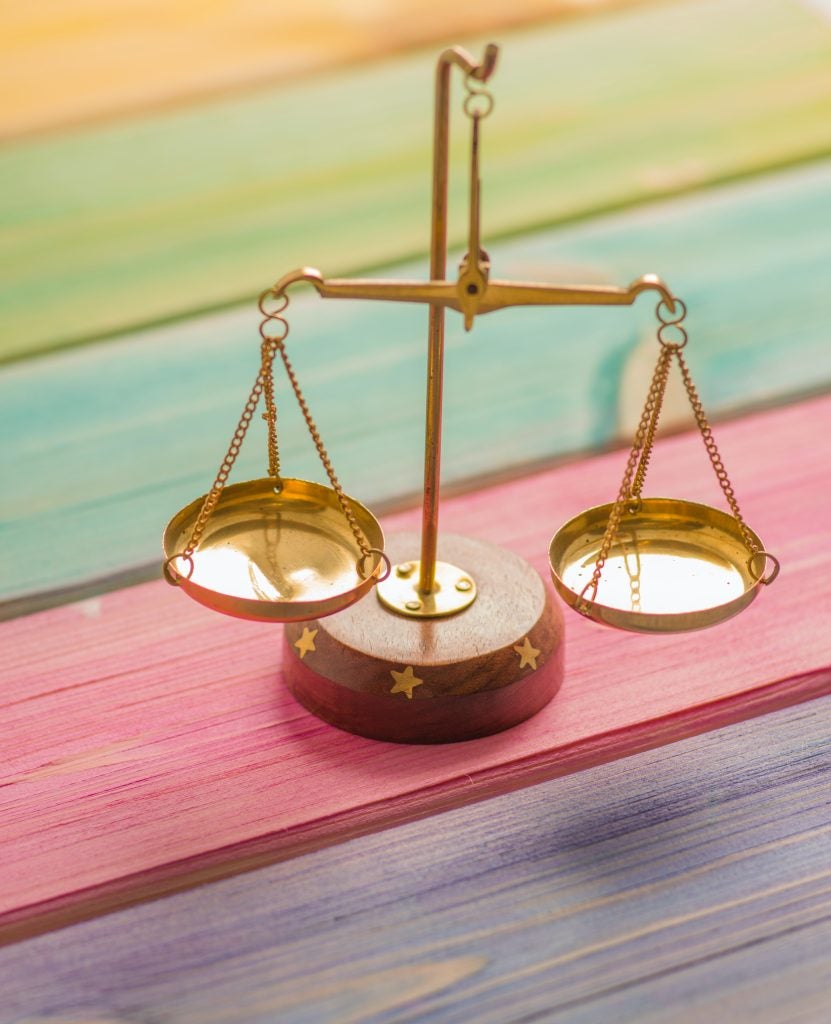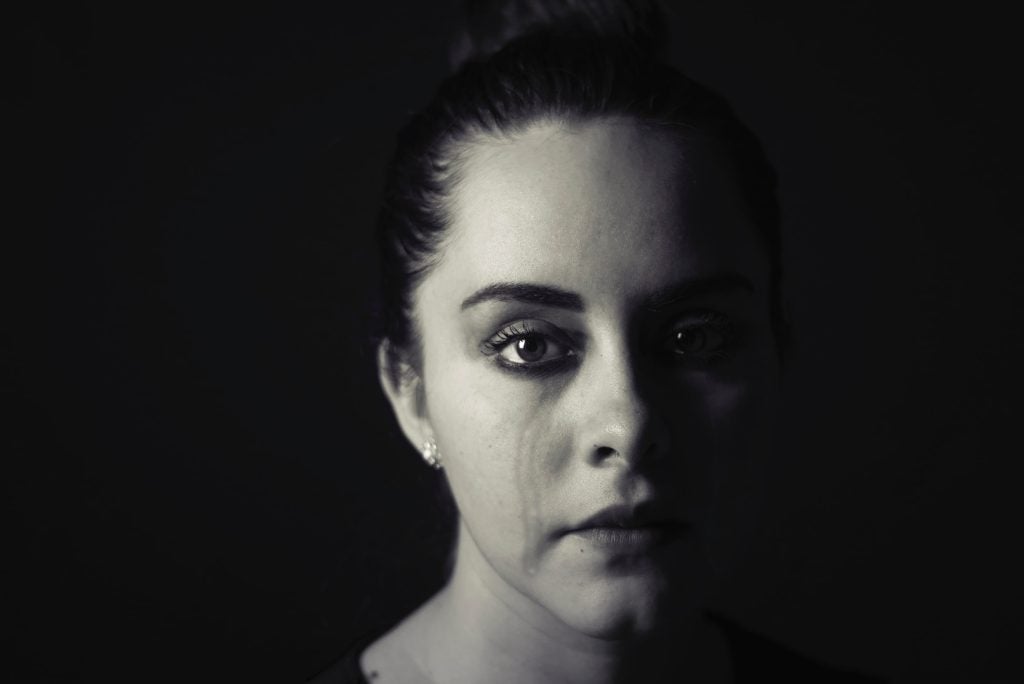
Disclaimer: This article discusses the topic of sexual abuse. We acknowledge that there are many words that individuals use to describe themselves after experiencing sexual abuse. In this article, we use the term “survivor” for the sake of consistency. We acknowledge that there are many ways of processing abuse, and we believe that each person should choose the language that makes them most comfortable. We are also not legal professionals. However, we will provide you with the most accurate information available and offer several specialized resources on the topic should one wish to use them. Individual cases often vary according to local laws as there is no international standard for these types of offenses.¹ ² A list of United States-based programs that connect lawyers who offer free services to survivors of non-consensual pornography (within the United States) will be listed at the end of this article.³
This may be a sensitive topic for some as nonconsensual porn is closely related to and sometimes an extension of sexual exploitation, sexual bullying, and/or sexual abuse.⁴ This article will discuss a variety of factors relating to what exactly is nonconsensual pornography, its effects on its survivors and, how it interacts with the law.
Table of Contents
What is Nonconsensual Pornography?

Nonconsensual porn’s (NCP) most inclusive legal definitions describe how abusers will publish, release, or threaten to release private “sexually explicit” (naked photos) or personally sensitive materials (such as addresses and phone numbers) to websites or otherwise spread this information in a way that may possibly lead to the intimidation, coercion, degradation and/or harassment of a survivor(s).⁴ NCP is a trend of sexual violence that has become increasingly prevalent in the last decade due to the inclusion of and reliance on technology in everyday life.⁴ NCP laws vary locally in countries that have them. Not all countries use the most inclusive legal definition of NCP.² The most broadly used definition among all countries with laws targeted at NCP, also known as ”revenge porn,” is “the distribution of private sexually explicit material without consent [from the individual represented in the material].”² The psychological and social effects of NCP are very real regardless of whether the action is threatened or if the action occurs.¹
NCP is often called “revenge porn” when presented to the public.² This name, while bringing attention to NCP, is often problematic and misleading.² The public’s views of NCP affect how the law is used.² The phrase “revenge porn” creates the idea that revenge is the main reason why (or motive) people publish private sexually explicit pictures, videos, or information regarding survivors.² According to the most recent data available, there are far more motivations for NCP than revenge.⁵ However, this assumption can often affect how lawmakers word these laws.² Due to the often extremely specific definition, NCP laws created in this way are only able to target the most serious offenses.² Using the term “revenge porn” limits legal arguments and establishes a definition of NCP that is often inconsistent with what behaviors occur.² For the sake of clarity, the phrase “non-consensual pornography” (NCP) will be used throughout the rest of this article, except when official laws specifically refer to the phrase “revenge porn”.² As of the last few years, scholars, lawmakers, and the most recent studies have also moved away from “revenge porn” and other similar phrases in favor of using the term NCP.² ⁵
Who Posts NCP and Who is this Affecting Most?
For adults, sexually explicit content via electronic communication can be a fun way to embrace technology and incorporate different practices into their sexual routine. According to recent research, nearly half of all 18 to 26-year-olds, have sent nude or semi-nude photos of themselves.⁵ Almost two-thirds reported having received a sexually explicit picture of others.⁵ The increase in technological advancements and accessibility to technology has contributed greatly to the popularity of sexting.⁵ However, there are risks associated with sending photos or videos to someone else digitally. In some cases, owning a sexually explicit picture or video of oneself on a phone or computer can put one at risk of someone hacking their device and uploading the explicit material without their consent.¹ However, the probability of someone hacking into any one person’s phone or computer and publishing sexually explicit materials is extremely low.⁵ For those who are concerned about being targeted by a previous partner or another person they sent a photo or video to, some safeguards can be taken to reduce or control the harm done by NCP.
Who posts it and why?

Young men between the ages of 18 and 25 are much more likely to be perpetrators of NCP.⁵ Most NCP is committed by those who have received the sexually explicit content in an intimate setting and either published the material themselves or shared it with friends.⁵ ¹ This sharing of information is often not intended to harm the survivor.⁵ Those who engaged in this type of NCP are typically unaware of how much harm can be caused by publishing or sharing intimate information and pictures.⁵ Some perpetrators may film an individual without their consent or knowledge and distribute this sexually graphic content of a person without permission. This example of NCP often falls into the category of voyeurism laws, but NCP laws might also apply to this offense as well.¹ ⁵
Who are the survivors?
Women age 26-33 are the most likely to be threatened with or be a survivor of NCP. While affecting women more often, NCP does not exclusively affect women. Men may become survivors of NCP as well. In general, the age group that is most susceptible to being threatened by or being a survivor of NCP are between the ages of 18 and 49.⁵
What are the Effects of NCP?
NCP can have lasting psychological, societal, and physical impacts on the survivor regardless of whether or not the threat is followed through with.⁶ ⁷ A recent small study found that female survivors of NCP experienced trust issues, post-traumatic stress disorder (PTSD), anxiety, depression, suicidal thoughts and other mental health issues connected with NCP.⁷ The symptoms often develop as a result of the perceived helplessness and isolation often felt by survivors.⁷ These psychological issues are often found in survivors of sexual assault as well. Theoretically, these psychological issues regarding NCP can be mitigated in the same way as the psychological impacts of sexual assault. This includes education on the topic, early intervention, and supportive environments for survivors.⁶ ⁷ It is also common for survivor’s reputations to be affected by NCP.⁷
Technological communication has been useful in spreading information that may enhance most people’s lives.⁴ While the rapid increase of access to information has many benefits, the widespread use of the internet has also created many issues regarding the sharing of this information.⁴ Unfortunately, the laws have not fully adapted to these issues.⁴ In today’s world, an individual’s online profile or information can be very important and have a substantial impact on their reputation and career.⁷ Often, potential employees will be researched by hiring companies to assess their online identity.⁷ During this research process, NCP can easily be uncovered and may disqualify a candidate for the position.⁷ This is an example of NCP’s effect on a survivor’s reputation.
Cyber harassment and sexual bullying are also problems regarding the reputation, safety, and security of survivors of NCP.⁷ People who have their personal information posted alongside their photos are more likely to be cyber-harassed and stalked to the point where they are often fearful of these individuals harming them.⁵ ⁶ ⁷ In cases where most or all of an individual’s information (schedules, phone numbers, place of work, etc.) are made available, these people are incredibly likely to have others harass them in person, via their phones, emails, or while at work.⁵ ⁸ NCP’s effects are thus extremely impactful on the lives of who it affects. In previous decades the harm of shaming was less severe due to a lack of online presence.⁶ In the modern age, the harm associated with shaming can be tremendous due to the market value that reputation holds.⁷ Some NCP websites take advantage of the lucrative business of removing explicit personal material for a price.⁴ However, most of these “revenge porn” websites get shut down due to existing extortion laws.⁴ For websites that don’t use extortion to make their profits, NCP is often hard to get removed.⁴ While this can cause many survivors to feel helpless, some steps can be taken to mitigate the damage of NCP.⁴
While very few studies have been conducted to show the prevalence and distribution of NCP, the most recent and comprehensive studies (as of 2018) show the following trends.⁵
Statistics Regarding NCP
Based on a recent representative study done by the non-profit organization Cyber Civil Rights, (CCRI) 12.8% of all respondents reported having been survivors of NCP or having been threatened with NCP.⁵ Within this percentage, 8% have reported being survivors of NCP with the remaining 4.8% having been threatened with NCP.⁵ 5.2% of all respondents reported having shared NCP at some point in their lives.⁵
By Gender

Women (at 15.8%) are much more likely to be the survivors of or threatened with NCP than are men (at 9.3%).⁵ Women (at 9.2%) are also much more likely to be survivors of NCP than men are (at 6.6%).⁵ Women (at 6.6%) are also extremely more likely to be threatened with NCP than are men (at 2.6%).⁵ Men (at 7.4%) are much more likely to be perpetrators than women (at 3.4%).⁵
By Age
Young men between the ages of 18 and 25 were the most likely to be perpetrators of NCP at 8.2% of all respondents. The next highest age group is men from the age of 34 to 41.⁵ This group accounted for 5.6% of respondents that reported being perpetrators of NCP.⁵
The three highest age groups for all survivors were, in descending order, 34-41 (at 12.4%), 26-33 (at 11.7%) and 42-49 (at 10%).⁵ The three highest age groups for all survivors of or having been threatened with NCP were, in descending order, 26-33 (at 17.7%), 34-41 (at 16.8%), and 18-25 (at 16.1%).⁵
By Health Outcomes
Both survivors and those threatened with NCP had significantly worse mental health outcomes and higher levels of physiological problems than those who did not experience NCP nor were threatened by it.⁵
Law and NCP
Local laws are typically inefficient when dealing with the repercussions of NCP. This is due to the often restrictive laws that make it difficult to prove the perpetrator’s intent to harm caused by their distribution of NCP.⁴ ² While NCP laws need to be strictly defined to be enforceable, they often end up protecting the abuser given that the NCP acts themselves are tough to prove.² Therefore, some “revenge porn laws” are too specific and may leave survivors vulnerable or unheard.² As of 2018, countries that have a “revenge porn” law include the United States (with 41 of the states and DC excluding New York, Ohio, Wyoming, Massachusetts, Philadelphia, Mississippi, Montana, Nebraska, Indiana, and South Carolina), the United Kingdom, Germany, France, Malta, Australia, Canada, The Philippines, Japan, and Israel.⁸ ¹¹
What Can Be Done With or Without Help?
Survivors of NCP are not always helpless in the matter. There are possibilities to protect or mitigate the concerns that survivors may have.⁴
Firstly, most search engines allow for alerts to be placed on any particular topic. When individuals publish to NCP sites, they will often use the name of the survivor. By establishing an alert for a personal name, one can identify possible offending material more quickly. Then, they can contact the proper resources or the website itself to attempt to remove the content as soon as possible. Establishing this type of alert can usually be often done in minutes and is an optimal option for those concerned about being targeted by NCP.
Secondly, internet service providers (ISPs) and websites are extremely careful not to violate copyright laws and they typically respond very thoughtfully to copyright infringement issues.⁹ Almost any recordable material can become copyrighted content, such as copyrighted sexually explicit images (videos and other materials can be more complicated).⁹ If other methods do not suffice, copyrighting one’s body can be the easiest method for getting NCP removed. If you are in a country that does not have NCP laws or other similar protections, copyright laws may be the only way to remove the content if the survivor was at the age of consent at the time the picture was taken.⁹ Therefore, copyright laws can be used to the advantage of survivors.¹⁰ Copyrights are typically easy to obtain but can be demoralizing for some people as they might have to prove their identity in the explicit material; a reference to a guide on how to copyright one’s body will be provided at the end of this article.⁹
A copyright is an exclusive and legal form of protection of any material that can be clearly identified. It aims to prevent others from distributing or otherwise using a person’s work or likeness without permission. Most countries follow copyright laws, and many use the US federal model and laws regarding copyright. Copyright laws only protect an individual from the future transmission of their work without their permission. Other factors may complicate legal cases so, it is best to consult a lawyer for more complicated cases. Copyrighted material that is targeted to be removed, called a “takedown request,” is generally removed promptly.⁹ However, be careful when creating copyright as there are two ways to register it: published and unpublished.⁴ ³ If one “publishes” their copyright, anyone with access to the public copyright database can see their copyright.⁴ ³ One does not need to “publish” their copyright to this public database to use it, nor do you need copyright to issue a “takedown request.”¹⁰ A recent amendment to a portion of the law (section 230) holds websites responsible if they are aware of the use of sexual exploitation on their websites. The use of copyright and other similar laws has been instrumental in reducing the harm that NCP survivors experience.¹⁰ Other requirements might be necessary to remove the information based on local law and the laws of the country in which the website is based. The use of copyright law to remove content may be a less desirable method as it may expose the survivor to further trauma and anxiety in the process.

Thirdly, if the survivor was under the age of consent when the material was taken, US State and Federal enforcement agencies can prosecute any individual in possession of, posting, or distributing that material. This offense is considered a distribution of child pornography.⁹ Many other countries have either adopted or been forced to comply with these regulations regarding child pornography. Remember that it is unlawful for anyone to own child pornography, even if the material is of themselves.⁹
Concluding Remarks
NCP can seem like an overwhelming topic to discuss and understand. This article aims to spread awareness of NCP, why NCP is important to discuss, who gets affected by NCP, and the effects NCP has on survivors. While it is understandable to become fearful of topics like this, general knowledge of NCP can be helpful. Actions can always be taken to reduce the harm that the survivor experiences. In addition to the material provided above, here is a list of additional resources that can assist survivors and allies alike.
- (844) 874-2274: This US-based program connects survivors of NCP within the United States to local lawyers (free of charge) and other resources that can help to mitigate the damage of NCP. This is a call center created by the Cyber Civil Rights Initiative.
- The Cyber Civil Rights Initiative website also contains a guide to removing offending NCP material. While it is targeted towards US law, it can be useful to individuals in other countries as well.
- Without My Consent is a comprehensive website on NCP and has guides about preserving evidence for use in court, bringing up the conversation to a lawyer, filing for a copyright, and how to do a takedown request. This website contains much more general information regarding the topic as well. This guide is US based but is informative for individuals in other countries.
- For international laws (Non-US laws), The Center for Internet and Society has compiled a fairly thorough guide on the exact wording of NCP and “revenge porn” laws.
These resources provide information to help individuals navigate the process of recording data, speaking to a lawyer, filing a copyright and removing NCP material.
References
- Tungate, A. (2014) “Bare Necessities: The Argument for A ‘Revenge Porn’ Exemption in Section 230 Immunity” Taylor and Francis Online: Information & Communications Technology Law, 2014. Vol. 23, p. 2, pp. 172-188. Date Accessed: 14 January 2019.
- Sebastian, M. (2017). Privacy and consent: The trouble with the label of “revenge porn”. Feminist Media Studies,17(6), 1107-1111. Date Accessed: 14 January 2019.
- Hinduja, S. (2016) “Revenge Porn Research, Laws and Help for Victims.” Cyber Bullying Organization. Date Accessed: 14 January 2019.
- Hall, M., & Hearn, J. (2017). “Situating revenge porn.” Revenge Pornography,43-53. Date Accessed: 14 January 2019.
- Eaton, A., Jacobs, H., and Ruvalcaba, Y. (2017). “2017 NATIONWIDE ONLINE STUDY OF NON-CONSENSUAL PORN VICTIMIZATION AND PERPETRATION.” Date Accessed: 14 January 2019.
- Langlois, G., & Slane, A. (2017). “Economies of reputation: The case of revenge porn.” Communication and Critical/Cultural Studies,14(2), 120-138. Date Accessed: 14 January 2019.
- Bates, S. (2017). “Revenge Porn and Mental Health: A Qualitative Analysis of the Mental Health Effects of Revenge Porn on Female Survivors.” Feminist Criminology, 12(1), 22–42. Date Accessed: 14 January 2019.
- Clevenger, S., Langheim-Frooman, K. (2017) “Cyber victimization Experiences of Sexual and Interpersonal Violence Survivors” Center for Victim Research. Date Accessed: 14 January 2019.
- 47 U.S. Code § 230 – Protection for private blocking and screening of offensive material. Date Accessed: 14 January 2019.
- Selyukh, A. (2018) “Section 230: A Key Legal Shield For Facebook, Google Is About To Change” AP. NPR. Date Accessed: 14 January 2019.
- Nigam, S. (2018) “Revenge Porn Laws Across the World” The Center for Internet and Society. Date Accessed: 14 January 2019
Last Updated: 13 February 2019.
